The feral deer population in Tasmania is now likely over 100,000 and continues to grow at 11.5% per year. Feral deer are estimated to cost the community up to $100 million annually, impacting agriculture, forestry, restoration, and road safety, with potential impacts for future green carbon markets and tourism.
Current efforts, including the $400,000 per year allocation in the 2021-2022 budget and the additional federal funding, are inadequate to address the scale of the problem. The Invasive Species Council estimates that at least $2.19 million per annum is needed for the next four years to effectively manage deer populations, a cost that represents only 2% of the annual economic impact of feral deer.
The $2.19 million per annum should be prioritised to:
- Eradication programs on King Island, Bruny Island, Tasman Pennisusla, NW Tasmania, East Coast National Parks (Freycient, Douglas Aplsry, Ben Lomand), peri-urbans areas of Launceston and Hobart.
- Eradication programs should include per- and post-control population estimates at a localised scale using aerial, camera trap, and/or spotlight methodologies
- Programs should include a range of management strategies, including aerial and ground shooting and trapping.
- Continued protection of Tasmanian Wilderness World Heritage Area
- Continuation of the aerial cull program until deer are eradicated
- Sophisticated monitoring program to prevent reinvasion
- Reduction of feral deer numbers in the Midlands
- Support of ongoing property-based management plans
- Increase culling efforts in the region
- Program to include aerial culling where appropriate
- Appointment of six regional deer coordinators
- Suggested regions: Northwest (inc. King Island), North (Launceston to Meander), Central Plateau, Midlands, East Coast, South (Bruny, Tasman, Hobart)
- Education and community awareness program
- Education and compliance program for deer farm regulations









